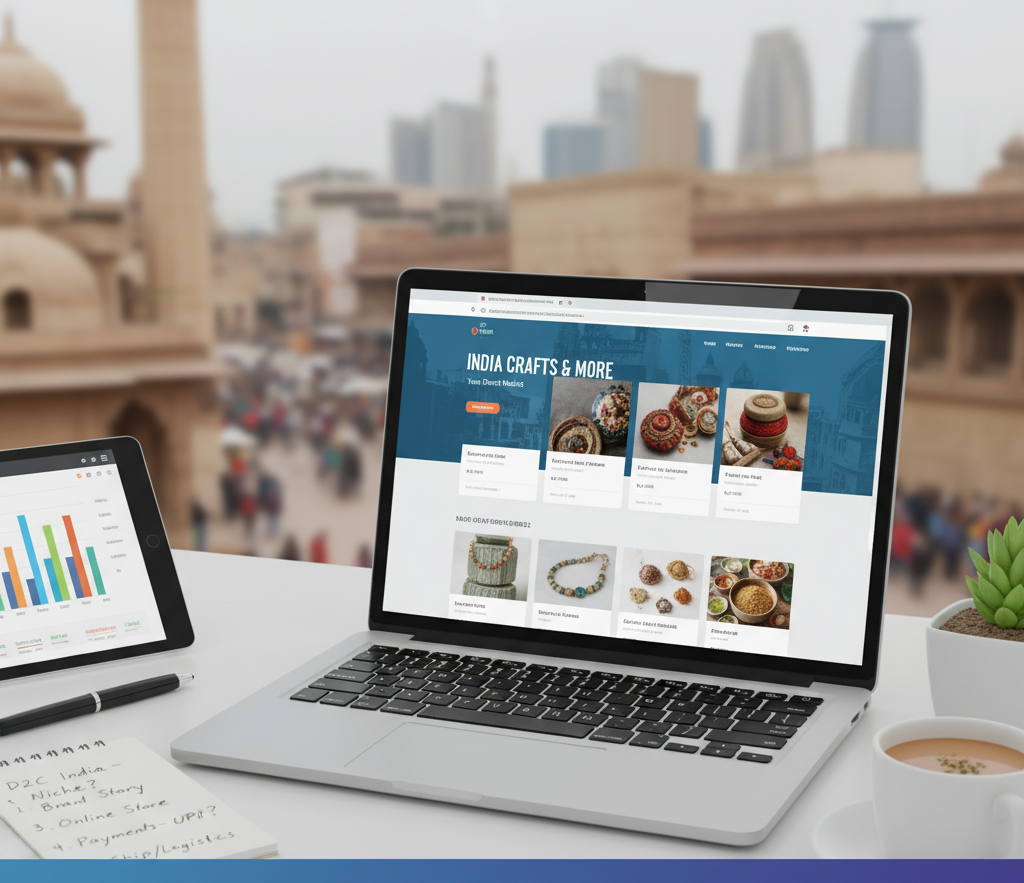Compare D2C marketplaces vs traditional marketplaces and discover what works best for sellers. Learn about benefits, challenges, and insights to drive digital growth in India.
The world of online selling is evolving at lightning speed, and sellers today face a critical choice: Should they grow through D2C marketplaces or stick with traditional marketplaces?
With the rise of digital-first businesses and consumer expectations for direct brand connections, this debate has never been more important. For sellers, understanding the D2C marketplace for sellers compared to traditional platforms can mean the difference between limited growth and long-term success.
In this article, we’ll explore the differences, benefits, and seller comparisons between these two models, helping vendors choose the best approach for their business.
What is a D2C Marketplace?
A D2C (Direct-to-Consumer) marketplace allows brands and sellers to connect directly with their end consumers, without intermediaries.
- Sellers list products directly under their brand name.
- They retain control over pricing, branding, and customer relationships.
- Examples include Shopify, Woocommerce, or niche marketplaces that prioritize direct consumer access.
This approach has become popular as buyers increasingly want authenticity, transparency, and a personalized shopping experience.
What is a Traditional Marketplace?
A traditional marketplace (like Amazon, Flipkart, eBay) connects multiple vendors with a wide base of customers.
- Sellers often compete on price rather than brand identity.
- The marketplace controls logistics, payment systems, and customer engagement.
- While it offers visibility, it may limit direct brand recognition for sellers.
For many vendors, this model is a tried-and-tested entry point into online selling.
D2C vs B2C: Understanding the Key Difference
While both models allow sellers to reach customers, D2C vs B2C is all about control and relationship building.
- B2C (Business-to-Consumer) marketplaces prioritize volume and reach, but they keep the buyer’s loyalty tied to the platform.
- D2C marketplaces give sellers ownership of customer data, insights, and repeat purchase opportunities.
In short: D2C empowers sellers to build a brand-first journey, while B2C emphasizes a platform-first journey.
Benefits of D2C Marketplaces for Sellers
- Direct Consumer Access – Build personal connections with buyers, boosting loyalty.
- Branding Control – Customize packaging, communication, and pricing strategy.
- Higher Margins – Avoid high commissions charged by traditional platforms.
- Long-Term Growth – With customer insights, sellers can design new products and upsell better.
Benefits of Traditional Marketplaces for Sellers
- Large Customer Base – Instant access to millions of active buyers.
- Trust Factor – Platforms like Amazon already have credibility.
- Logistics Support – Sellers don’t need to worry about delivery or payments.
- Quick Entry Point – Ideal for small businesses testing the digital waters.
Seller Comparison: D2C vs Traditional
| Factor | D2C Marketplace for Sellers | Traditional Marketplace |
|---|---|---|
| Brand Visibility | Strong brand identity | Platform-first branding |
| Customer Data | Full access to insights | Limited, controlled by marketplace |
| Margins | Higher, fewer middlemen | Lower, commission-heavy |
| Customer Loyalty | Direct and long-term | Loyalty belongs to platform |
| Ease of Start | Requires setup & effort | Quick onboarding |
| Scalability | Sustainable growth | Rapid visibility but competitive |
Marketplace Insights India: The Rising Trend
In India, digital commerce is booming. According to recent marketplace insights India, sellers are shifting toward D2C models to stand out in a crowded market. Startups and established brands alike are exploring vendor choice guides to decide between quick visibility in traditional platforms and sustainable digital seller growth in D2C spaces.
For instance, many small vendors initially sell through Flipkart or Amazon but eventually migrate to a D2C model for long-term profitability.
Vendor Choice Guide: Which is Best for You?
- Choose D2C if: You want brand independence, higher profits, and stronger consumer loyalty.
- Choose Traditional Marketplaces if: You want quick access to customers, rely on platform credibility, and prioritize volume over branding.
- Hybrid Model: Many successful sellers use both models strategically—starting with traditional marketplaces for exposure and slowly building a D2C presence for deeper engagement.
Final Thoughts: What’s Best for Sellers?
The future of online selling is not about choosing one over the other but about leveraging both smartly. Traditional marketplaces provide reach and trust, while D2C marketplaces for sellers ensure control, data ownership, and stronger customer relationships.
For sellers in India and beyond, the winning strategy lies in balancing short-term visibility with long-term digital seller growth. By understanding the differences and using insights effectively, you can ensure your business thrives in the competitive e-commerce landscape.




.jpeg)
Comments
No comments yet. Be the first to comment!